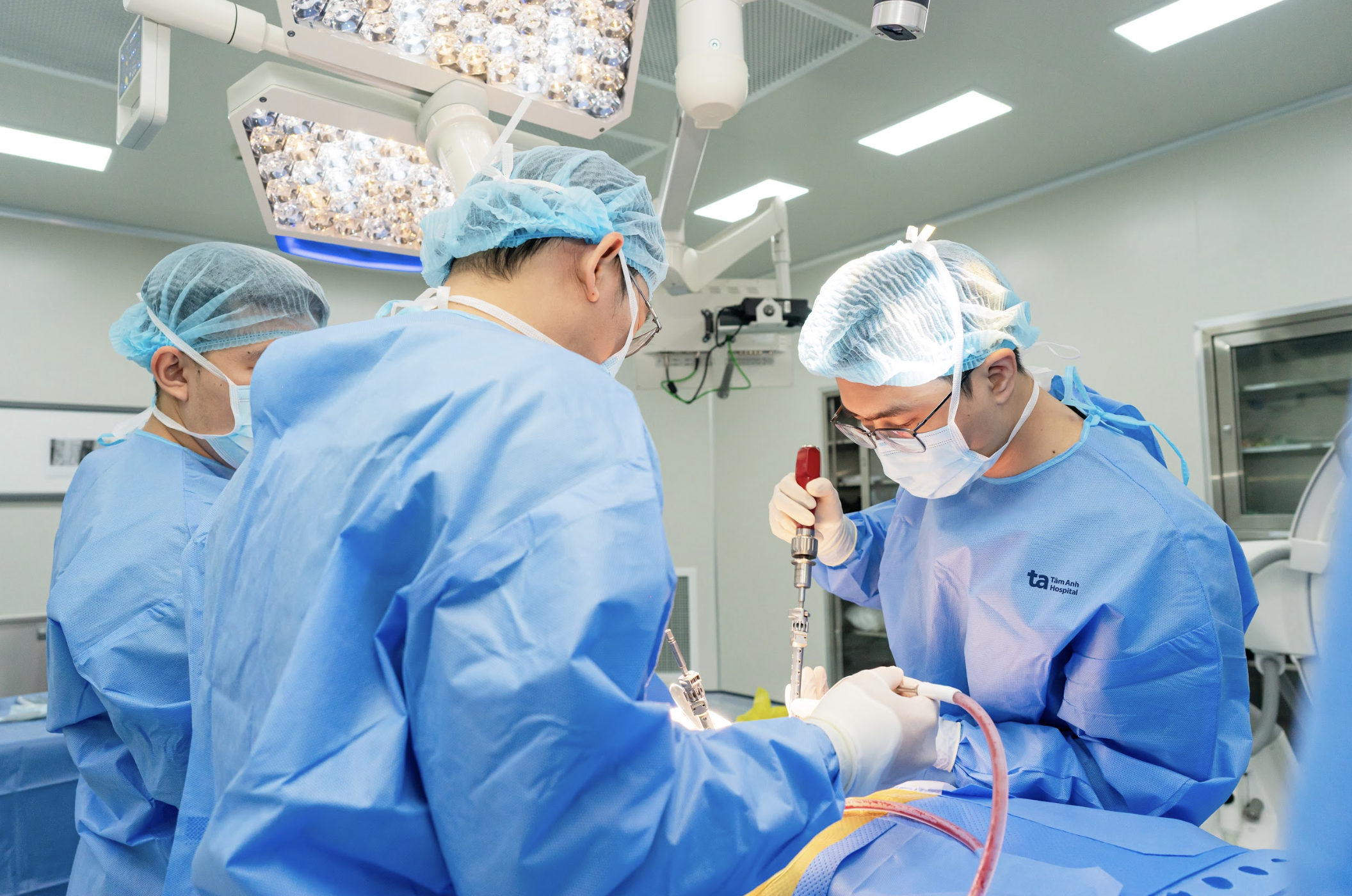Dr. Nguyen Hoang Thi from the Spine Unit at Tam Anh General Clinic, District 7, explains that correct sitting posture helps relax the lumbar spine, reducing pressure on the sciatic nerve and thus alleviating pain and other symptoms. This not only helps improve sciatica but also prevents other musculoskeletal problems.
Dr. Thi recommends several beneficial sitting positions for sciatica sufferers.
Sit upright, leaning back in a chair
When sitting for extended periods, individuals with sciatica should use a chair with back support and maintain an upright posture with relaxed shoulders. This distributes weight evenly, reducing pressure on the lumbar spine and sciatic nerve.
Place both feet flat on the floor
This position helps maintain stability and reduces tension in the affected leg, thereby alleviating pain. Avoid dangling or crossing your legs. Dangling disrupts balance and increases pressure on core muscles, while crossing legs increases pressure on one side of the body, tilting the pelvis and leading to spinal misalignment and reduced blood flow to the sciatic nerve. These positions can exacerbate sciatica symptoms.
 |
Dr. Thi assesses a patient's back. Photo: Tam Anh General Clinic, District 7 |
Sit cross-legged
Sciatica pain often affects only one side of the body. Sitting cross-legged with the affected leg on top can provide relief by reducing tension and pressure on the sciatic nerve and stretching the piriformis muscle, which directly impacts the nerve.
Position your computer screen at eye level
Incorrect posture (slouching, hunching, curving the spine) increases pressure on the vertebrae, straining the spine and supporting muscles, and compressing the sciatic nerve. This worsens the condition, increasing pain and discomfort. When working or studying, position the computer screen at eye level to avoid bending or straining.
Dr. Thi notes that most mild sciatica cases improve significantly within a few weeks with proper home care, such as hot or cold compresses, adequate rest, medication, and gentle stretching exercises. For severe pain that disrupts daily activities or doesn't respond to home care, these sitting positions may not be sufficient. In such cases, consult a doctor for prompt treatment, which may include surgery.
 |
Surgery for sciatica. Photo: Tam Anh General Hospital |
Currently, discectomy is a common treatment for sciatica caused by herniated lumbar discs, a frequent cause of the condition. This procedure removes a portion of the spinal joint to better access and relieve pressure on the nerve root. It's a minimally invasive technique with a relatively small incision, resulting in less pain, blood loss, and a faster recovery.
Phi Hong
| Readers can submit questions about musculoskeletal diseases here for doctor's answers. |












